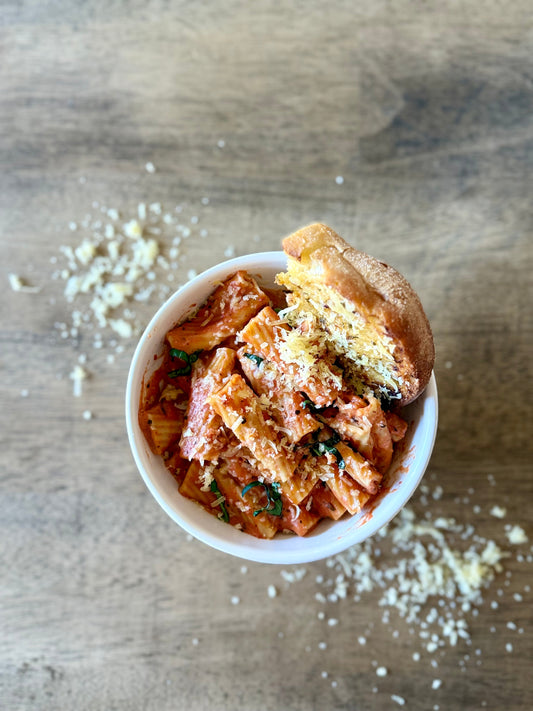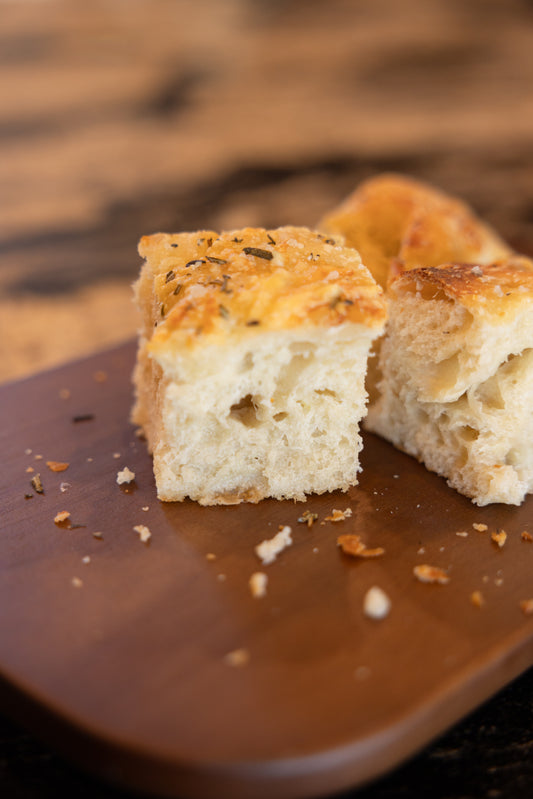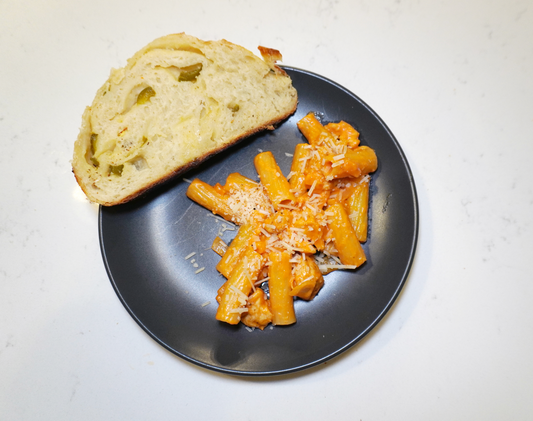On a recent Sunday afternoon, my partner and I were doing our weekly grocery shopping at the 400 Smith’s, one of Logan’s local grocery stores. For the most part, we are periphery shoppers who spend most of our time in the produce section in the back right corner of the store. The path here regularly takes me past Smith’s new cheese counter, which I happily peruse each week. On this Sunday we were in quest of potatoes when we got stopped in front of the counter. It was not to indulge my cheese interests, but to chat with a friend of A.’s we had bumped into, Nathan. Not knowing him, I stood back as A. made small talk.
“What are you up to today,” she asked Nathan.
He gestured towards a couple who had gathered around the conversation, “My friends just arrived this afternoon from France. They’re visiting for a month. I am just helping them navigate the grocery store before they get settled.”
The couple introduced themselves to us and then dispersed to continue investigating food stuff, the man heading towards the cheese counter. As I watched him, I felt a wave of embarrassment rise inside me as he picked up a container of grated Private Selection Parmesan, gave it a shake, and tried to peer through the opaque plastic to get a look at the cheese inside before he set the package back down.
I know that to feel ashamed of Private Selection Parmesan plays into a vat of stereotypes about both the French and American’s relationship to cheese (and food generally), but I couldn’t help but feel disappointed that with a case full of unique cheeses on display, some of them local to the state of Utah, the Frenchman picked the most commercial selection of them all.
It isn’t that I have a problem with Private Selection or other primary brand cheeses. In fact, if you opened the deli drawer of my fridge now, you would see an array of cheeses: Rockhill’s Hispanico and 60 day Wasatch Mountain, a block of both Private Selection Parmesan and Feta, and bags of Kroger shredded Mexican Blend and Mozzarella. I feel much like Bronwen and Francis Percival, authors of Reinventing the Wheel: Milk Microbes, and the Fight for Real Cheese:
It would be absurd to claim a single style of cheese as uniquely real. ... Real cheese is a manifestation of wider biodiversity, a food that exploits all of the resources and raw materials of the farm. … It is an acknowledgement that dairy farming and cheesemaking are one and the same process, and … the link between the cheese and the environment from which it is fashioned (25).
Rather, I felt embarrassed by the cheese this stranger chose to investigate because the French and other European countries have very specific language and names for cheese that Americans don’t. It isn’t common knowledge (at least it wasn’t for me) that in European countries, most cheeses bear names and descriptors that have legal definitions and usage rights behind them. Based on the idea of terroir, that food reflects in its flavor the qualities of the soil that ultimately produced it, their language and names reflect the places and processes that produce the cheese.
Take Parmesan for example. Most cheeses labeled Parmesan are imitations of Italy’s Parmigiano-Reggiano. Taking its name from the Italian provinces it originated from, Parma and Reggio Emilia, Parmigiano-Reggiano is made with partially skimmed cow’s milk and legally required to be aged for at least a year, though in some cases is aged up to four. In order to be sold as such, producers must only feed their animals according to a strict set of guidelines and age the cheese through a tightly defined processes as documented by the Denominazione di Origine Controllata, a governing body in Italy that designates high quality and renowned products that demonstrate characteristics that are connected to the natural environment and respect a specific production process. The Parmesan investigated by the Frenchman, however, can be named and produced under much looser parameters in the U.S. and, according to the U.S. Food and Drug Administration, is only required to be aged for 10 months significantly changing it’s texture and flavor.*

A similar set of requirements exist for a cheese to legally be labeled Gruyère. First produced in the small town of Gruyères in the Fribourg region of Western Switzerland, Gruyère style cheeses have been made in neighboring areas of both France and Germany for centuries and expanded to other regions of the world as well. Each distinct in flavor, the early 2000s brought a fierce battle between the French and Swiss over who rightfully had the “controlled designation of origin” to formalize that they had the true Gruyère. In an instance where the Swiss forwent their typical neutrality, the European Union had to get involved to end the dispute.
Cheese with true Gruyère label.

Ultimately, given that the name comes from a town in a Swiss territory, they won the name rights in 2010. In fact, some of Rockhill’s more ripened customers might remember when the name Gruyère got removed from our Wasatch Mountain. The Swiss took their name protection seriously threatening lawsuits on American cheese makers who continued to use Gruyère on their labels. Rockhill was among several American cheese makers to drop the name despite making cheese that exhibits traditional Gruyère qualities, such as a nutty, tangy flavor with a soft texture pocked with small eyelets.
In the same way that other countries’ cheese names refer to the specific processes and places from which they originated, more general language used to describe cheese such as farmstead or artisanal have legal backings, too. Typically, there are four labels that can be applied to cheese that clue an eater into both the scale and degree of separation between the dairy farm that produced the milk and the making of a final block of cheese. Percival and Percival explain that:
In France, a legal classification is used to distinguish between cheeses that are fermier (made by the owner of the animals that produce the milk), artisanal (made on a modest scale using bought-in milk), cooperative (made by dairy farmers who collectively own a facility that processes their milk) or industriel (made from the pooled milk of many producers) (Reinventing the Wheel, 29).
There is a rich tradition of artisanal cheese makers in the United States – Rockhill included – whose products warrant the legally defined descriptors farmstead** and artisanal***. A consumer has to be careful, however. In the United States these terms are not regulated, allowing anyone – including more commercial producers – to apply these labels to their products.
At Rockhill we strive to uphold both the techniques and ethics of traditional cheese making. This is exemplified in Rockhill’s decision to produce cheese made with raw milk, which, as of July of 2019, we began sourcing from another local, small scale dairy, the Cache Meadow Creamery. (You can learn more about the milk hauling process in the blog post “Milk Hauling at Rockhill Creamery”) It is also why our cheese is made in small batch sizes (typically about 110 gallons of milk yielding eight large wheels and two small wheels of cheese per make), and our commitment to hand as opposed to mechanical methods.
All of this is reflected in our labeling. That is why as our aging cave becomes filled with cheese made with milk from Cache Meadow Creamery, you will see the word farmstead slowly disappear from our packaging. Rest assured, our cheeses still merit the term artisanal and the high quality and unique flavors encompassed in this descriptor. I know this because on the days I assist with cheese makes, I leave the creamery with pruney fingers and my arms moisturized by butter fat from my hands being in the vat.
---
* Information about Parmesan and Parmigiano-Reggiano came from their respective entries in The Cheese Lover’s Companion: The Ultimate A -to-Z Cheese Guide by Sharon and Ron Herbst.
** Defined in The Cheese Lover’s Companion: The Ultimate A -to-Z Cheese Guide as “used to describe cheese that are produced on a farm from milk produced exclusively by the farmer’s animals. The cheese is made in an artisan style with high-quality ingredients which translates in the marketplace to better quality and higher cost” (198).
*** Defined in The Cheese Lover’s Companion: The Ultimate A -to-Z Cheese Guide as “cheese [that] is primarily handmade and produced in small batches by traditional, non mechanical methods. High-quality ingredients and attention to detail limit the quantities of artisan cheese and naturally increase the price. Unlike farmstead cheeses, artisan cheeses can be made with milk from other farmers, although many artisan cheesemakers use only their own animals for milk” (68).





